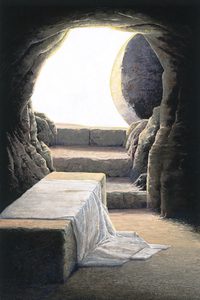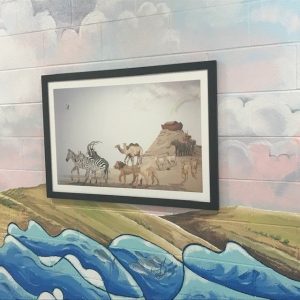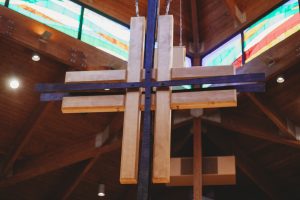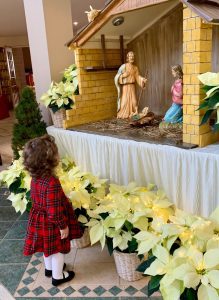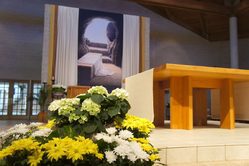Art and Environment Ministry is for the care and beautification of our church in conjunction with liturgical guidelines. The decoration of the church supports and enhances the liturgy experience for all parishioners.
Our responsibilities include decorating the entire sanctuary year-around. Major liturgical events such as Easter, Christmas, Pentecost, Feast of the Transfiguration, Parish Anniversary, and Thanksgiving have special decorating efforts with particular attention to the following areas:
- The Altar
- Reredos (wall behind the altar)
- Tabernacle
- Area in front of the Transfiguration Window
- Baptismal font
Other areas we care for includes
- Chapel
- Foyer
- Bishop Hall Mantle
Outside Areas maintained for special occasions:
- St. Francis Garden
- Front Church Entrance
- Back Church Entrance
- Chapel Entrance
One interesting place you might find Art and Environment Volunteers is in the church basement… organizing our storage and creating new and interesting arrangements.
The Art and Environment committee always welcomes help. Talents needed include volunteers who can assist maintenance with banner changes, plant placement, decorating for special events, planning, email, phoning volunteers, and general organization for the committee.
If you are interested in assisting, bring your talent, muscles, or simply a willingness to serve!
St. Francis Garden
Our St. Francis Garden was dedicated in 2006. It serves as a transition from our secular world to a place of worship. The garden invites us to reconciliation and to love in all its forms. St. Francis with his arms open is universal love. He welcomes all of God’s creation, and he is welcoming us. The central statue is 40” tall. At the feet of the saint is a dog representing unconditional love (the basset hound is actually a portrait of Temperance, one of Msgr. Patrick Bishop’s dogs). On the other side are two larks. St. Francis had a particular fondness for the song of the larks, and their hoods reminded him of monks. The birds are bobbing one wing to each other, a gesture of greeting for a gathering flock. They put forth the concept of fraternal love. In front of St. Francis, there is a fox and hare. The fox is presenting his neck to the hare. This is a canine gesture of non-aggression. The hare, instead of cowering is reaching out to the fox. This was conceived to emphasize atonement.
Recently, additional boulders were placed to provide for replanting of a Mission Olive tree. This olive cultivar was brought to the new world by the Franciscans at the time of the Spanish Missions. While it is vulnerable in our area, care will be taken for winter protection.
St. Francis, recognized as a holy man, was often called upon to resolve disputes. He did so by challenging the aggressor to reconcile with victims. An example is the legend of the Wolf of Gubbio. St Francis blessed and befriended a wolf that was terrorizing the townspeople of nearby Gubbio. The story teaches us to overcome fear by loving our enemy and by doing so, forgiving transgressions.
The raised beds extending to the office entrance continue the welcoming garden motif with plantings of biblical flora and a placement boulder for the proposed Wolf of Gubbio. The cistus or rockrose produces ladanum, an aromatic resin harvested since ancient times and used for incense and perfume. Creeping rosemary and thyme provide the ground cover between the cistus shrubs and another olive cultivar planted for pollination. Two upright rosemary shrubs frame the office entrance. The gardens afford us space for reflection, a gracious approach to church, and a welcome for all.
Art & Environment Committee July 2016
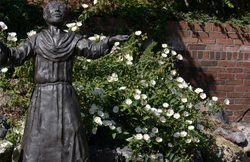
Our Easter Banner
A banner is a presentation, not as ornament but as preparation for the people to fully participate in the liturgy. When we gather for Mass, the setting on the reredos allows an introduction to the emphasis of a particular liturgical season, and so lets us prayerfully prepare to participate in the celebration. At other times, a banner offers an opportunity for Visio Divina to a person seeking private meditation in the church. The Easter banner is a view from inside the empty tomb. We are called to follow Our Lord up the steps and into the light of the Resurrection.
